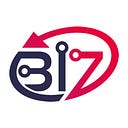How to Improve the Lighthouse Performance Score For Your WordPress Site
Lighthouse is a powerful tool created by Google to help improve the quality of web pages. It provides insights into performance, accessibility, SEO, and more.
A high Lighthouse score is crucial because it enhances user experience, boosts SEO rankings, and speeds up your website.
This guide will walk you through the steps to improve your Lighthouse performance score for your WordPress site using the latest data and best practices.
Understanding Lighthouse Metrics
1. Performance Metrics Overview
Lighthouse measures several key performance metrics that indicate how well your site performs. Here’s a breakdown of these metrics and their importance:
- First Contentful Paint (FCP): This measures the time it takes for the first piece of content to appear on the screen. A fast FCP helps keep users engaged.
- Largest Contentful Paint (LCP): This measures the time it takes for the largest visible content element to load. Ideally, this should happen within 2.5 seconds.
- Speed Index: This shows how quickly the contents of a page are visibly populated. Lower scores are better.
- Time to Interactive (TTI): This measures how long it takes for the page to become fully interactive. Aim for a TTI under 5 seconds.
- Total Blocking Time (TBT): This measures the time between FCP and TTI when the main thread is blocked for long enough to prevent user input responsiveness. Minimizing TBT is crucial for a smooth user experience.
- Cumulative Layout Shift (CLS): This metric measures the visual stability of a page. Ensure elements don’t shift unexpectedly to keep CLS low.
Conducting a Lighthouse Audit
1. Running a Lighthouse Audit
To start improving your Lighthouse score, you need to run an audit. Here’s how:
- Using Google Chrome DevTools: Open your website in Chrome, right-click on the page, and select “Inspect”. Navigate to the “Lighthouse” tab and click “Generate report”.
- Interpreting Results: Review the report for scores and suggestions on how to improve each metric.
Optimizing Performance
1. Improving FCP and LCP
Efficient Image Handling
- Use Modern Formats: Convert images to WebP or AVIF for better compression without losing quality.
- Lazy Load Images: Implement lazy loading so images load only when they come into the viewport.
- Compress Images: Use tools like TinyPNG or ImageOptim to reduce image file sizes without sacrificing quality.
Mobile-First Optimization: Why Your Website Needs to Adapt in 2024
Optimizing Fonts
- Preload Critical Fonts: Preloading helps browsers fetch fonts faster.
- Use font-display: swap: This ensures text remains visible while web fonts are loading.
Minimizing Render-Blocking Resources
- Defer Non-Critical JavaScript: Only load essential scripts initially and defer the rest.
- Inline Critical CSS: Include essential CSS directly in the HTML to avoid delays.
- Reduce Unused CSS and JavaScript: Remove any CSS and JavaScript that isn’t used.
2. Enhancing Speed Index and TTI
Improving Server Response Times
- Use Reliable Hosting: Opt for a reputable hosting provider known for speed and reliability.
- Implement Server-Side Caching: Caching reduces the time taken to fetch data from the server.
- Use a CDN: Content Delivery Networks (CDNs) distribute content closer to users, speeding up load times.
Optimizing JavaScript Execution
- Minimize JavaScript: Reduce the size of JavaScript files.
- Use Code-Splitting: Break up JavaScript files into smaller pieces to load only what’s needed.
- Remove Unused JavaScript: Eliminate any unnecessary JavaScript to reduce load times.
3. Reducing TBT
Efficient JavaScript Management
- Break Up Long Tasks: Split long-running tasks into smaller chunks to keep the main thread responsive.
- Use Web Workers: Offload heavy computations to web workers to free up the main thread.
Optimizing Third-Party Scripts
- Lazy Load Third-Party Scripts: Load third-party scripts only when necessary.
- Remove Unnecessary Scripts: Eliminate third-party scripts that don’t add value.
4. Minimizing CLS
Ensuring Visual Stability
- Use Size Attributes for Images and Videos: Always define width and height to prevent layout shifts.
- Avoid Dynamic Resizing: Don’t use elements that change size unexpectedly.
- Preload Important Resources: Ensure critical resources load promptly to maintain layout stability.
Implementing Advanced Techniques
1. Using Progressive Web App (PWA) Features
- Benefits of PWAs: PWAs offer enhanced performance, offline capabilities, and improved user experiences.
- Implement Service Workers: Service workers cache assets to speed up repeat visits and enable offline functionality.
- Web App Manifests: Define how your site should appear and behave when installed on a user’s device.
2. Leveraging HTTP/2 and HTTP/3
- Advantages of Newer HTTP Protocols: HTTP/2 and HTTP/3 provide faster and more efficient loading.
- Enable HTTP/2 or HTTP/3: Check with your hosting provider to enable these protocols on your server.
3. Employing AMP (Accelerated Mobile Pages)
- Introduction to AMP: AMP enhances mobile performance by using a stripped-down version of HTML.
- Implement AMP in WordPress: Use plugins like AMP for WP to easily integrate AMP into your WordPress site.
Testing and Monitoring
1. Regular Performance Audits
- Importance of Regular Audits: Consistently check your site’s performance to ensure ongoing improvements.
- Tools for Continuous Monitoring: Use tools like PageSpeed Insights and WebPageTest to keep track of your site’s performance.
2. A/B Testing for Performance Improvements
- Using A/B Testing: Compare different versions of your site to see which performs better.
- Tools for A/B Testing: Utilize WordPress plugins or external tools like Google Optimize to conduct tests.
Conclusion
Improving your Lighthouse performance score is crucial for providing a fast, user-friendly experience.
By following these steps, you can optimize your WordPress site to achieve higher scores, better SEO rankings, and more satisfied users. Regularly test and monitor your site to maintain and improve performance over time.
